Hardkernel have kicked off 2020 with the surprise release of their new Linux powered handheld – the Odroid-Go Advance. This is the second handheld from HardKernel and promises to deliver magnitudes more raw power than it’s older brother. I’ve had mine for a couple of weeks now. It’s a very impressive handheld in many areas, but the Odroid-Go Advance has a long journey ahead. Read on for the Odroid-Go Advance hands on and review.
The OGA is something of a game changer in the obscure handheld niche. The RK3326 in the Odroid-Go Advance wipes the floor with any of the Ingenic based processors we’ve been force fed over the past few years. The JZ4760B and even the JZ4770 in the New PocketGo and RG350 cannot compete with the power of the RK3326. The fact that it runs on Linux (with source code available!) means that development for the device has taken off immediately, with at least three separate teams working on their own Operating Systems. And added to all of that, the $55 price tag (excl. shipping) is very reasonable. It’s difficult to imagine what direction Chinese manufacturers will turn next, they’re going to have to come up with something rather amazing to convince people to not buy the Odroid-Go Advance.
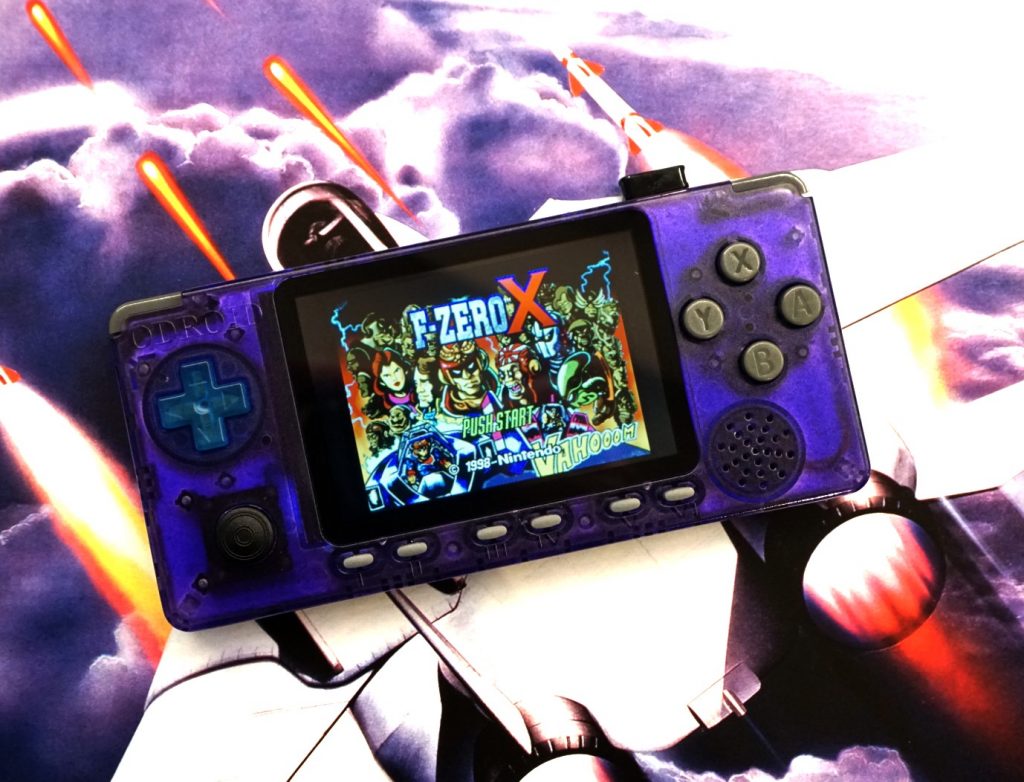
HOW TO ASSEMBLE THE ODROID-GO ADVANCE
Just like their original handheld, the Odroid-Go Advance is only available as a DIY kit. Although this may put some people off, it’s really not as bad as it sounds. They have purposefully designed the OGA with as few parts as possible. Assembly is very straight forward (with some caveats).
Inside the box you’ll find all the bits and pieces in separate bags and wrapped in bubble wrap. Inside the red bubble wrap is the LCD, and a little slip of card telling you where to find the assembly instructions. There’s also a stark warning on the card to be careful with the LCD. It is incredibly fragile and you should take your time when clipping it in to the shell!
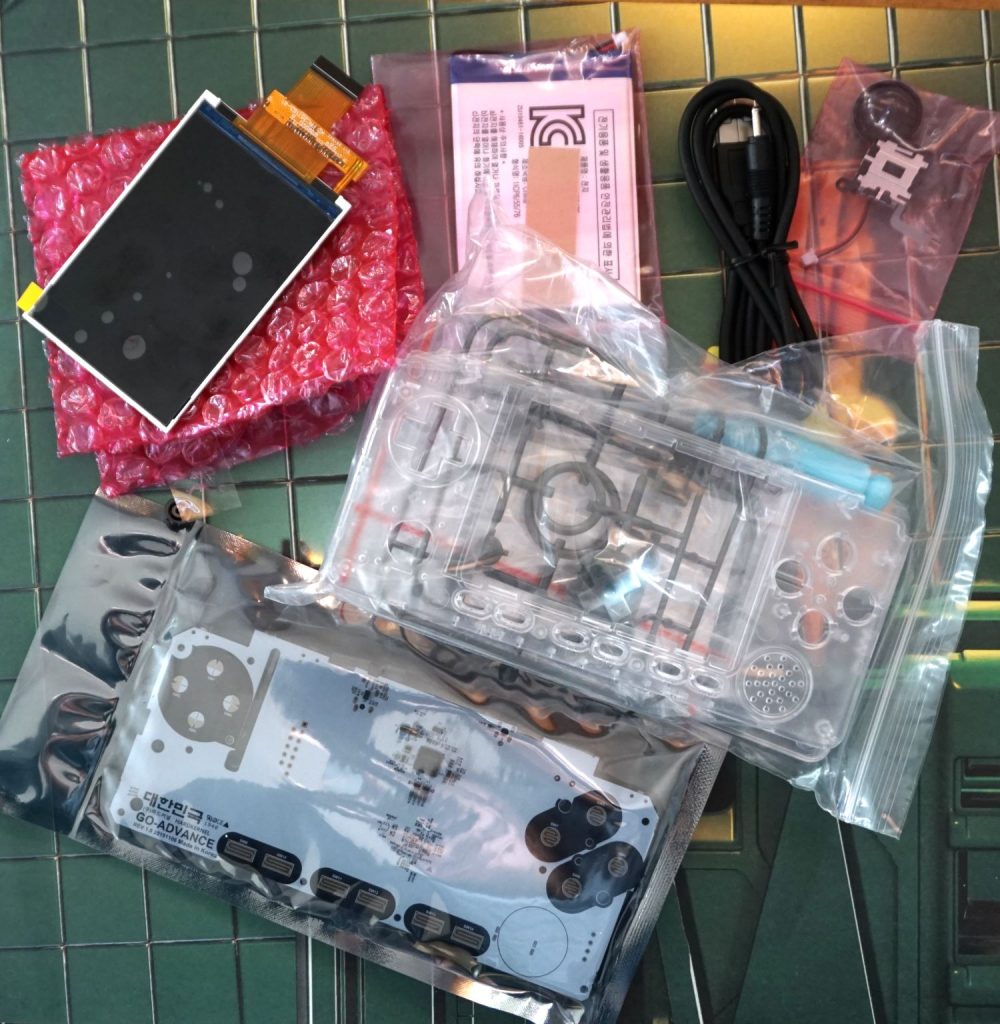
With the exception of the LCD, the only other slight difficulty is clipping the shell together. It requires an awkward direction of pressure to get the shell to click in to place properly. It may look as though it’s locked, but if the seams of the shell aren’t completely flush then you’re not there yet. The instructional video shows the correct way to do this, and with a little practice it’s easy enough.
BUILD QUALITY AND LCD
When the Odroid-Go Advance was first announced there was a bit of hoo-ha about the choice of TFT instead of an IPS display. As it happens, IPS technology is also known as ‘Super TFT’ and the screen in the OGA is absolutely fantastic. It is better than the display in the New PocketGo and RG350, and is most comparable to the IPS display now being used in GBA mods. On the topic of GBA, the resolution of the OGA screen is 480×320. This means that with the right scaling options (the official image uses the right scaling) GBA looks absolutely amazing on this device. 480×320 is exactly double the horizontal and vertical pixel count of the GBA’s 240×160 display. This means perfect 2x integer scaling for GBA games, and because of this they look incredible on the Odroid-Go Advance.

It has to be said that the build quality of the OGA isn’t as good as some of its rivals. The shell is made of transparent poly-carbonate and it has a matte finish on the front and back, with a glossy finish on the sides. The unit does feel solid and weighty once put together, but there is no denying that the plastic feels a little on the cheap side. Handhelds such as the RG350 feel like a more premium product and to compare this to anything from the likes of Nintendo or Sony would be silly.
THE ODROID-GO ADVANCE CONTROLS
Having said all of that, the controls mostly feel good. One gripe would be that the d-pad has sharp edges, but this is easily remedied. The d-pad from the Game Boy Pocket is a perfect drop in replacement and can be bought from AliExpress for next to nothing. I have read complaints of mushy d-pad, but honestly it feels OK to me. The analog stick is a clone of the PS-Vita stick and works fine. It’s not as good as the RG350 analogs, but vastly better than the slider on the New PocketGo.
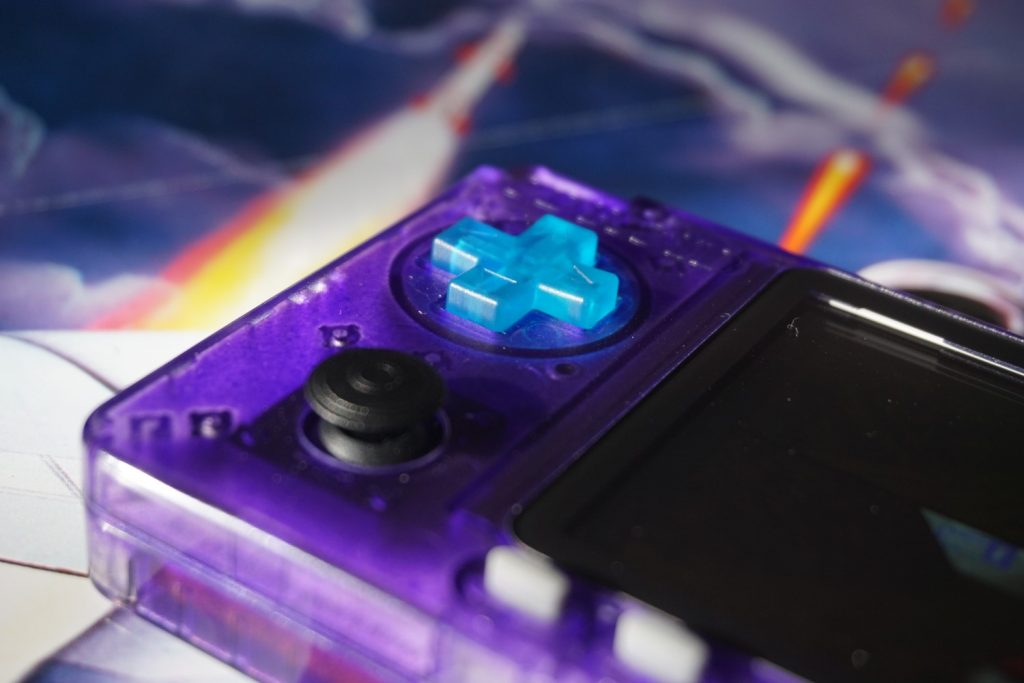
Some people have had success customising the ABXY buttons with modded buttons from the Game Boy Pocket. It could depend who manufactured your buttons, but the ones I ordered were no good. Whilst they fitted OK after trimming a leg or 2 off – the response from them was flaky. Sometimes they registered and other times they didn’t. Because of this, I chose to stick with the stock ABXY buttons. The shoulder buttons are clicky but easy to reach and perfectly acceptable, and the six under screen buttons are OK too.

HOW’S THE SOFTWARE?
As previously mentioned, there are 3 choices of software for the Odroid-Go Advance right now. Crashoverride and his team of developers are in charge of the official image and it can be found here. The Retro Arena (aka TheRA) have a release candidate available and it’s on the Tech Toy Tinker site for download. There is also a Batocera image in development and that’s available here. I think that all of these images are based on Emulation Station, and as such they all share some similarities. One of the other similarities that they all currently share is they’re not really ready for general release yet. Yes even the official image!
Maybe we’ve been spoiled by OpenDingux and Gmenu2x over the years, but I have tried all 3 systems and each one has shocked me at how unfinished it is. Whether it be the inability to map emulator specific controllers in the software*, or having to back out of a game to change the volume, or certain emulator menus loading in portrait mode instead of landscape – the software for the Odroid-Go Advance has a long journey ahead of it.
*Apparently you need to edit a config file in the Linux terminal to set these up.
This isn’t meant as a slight on the developers, they are doing God’s work here. Rather, it seems strange that HardKernel were happy to release the device before allowing the developers to polish the official image a little more. I understand that this is a device for tinkerers, releasing it as a DIY kit makes that plainly obvious. But it would have been great to have a well rounded OS for it on release.
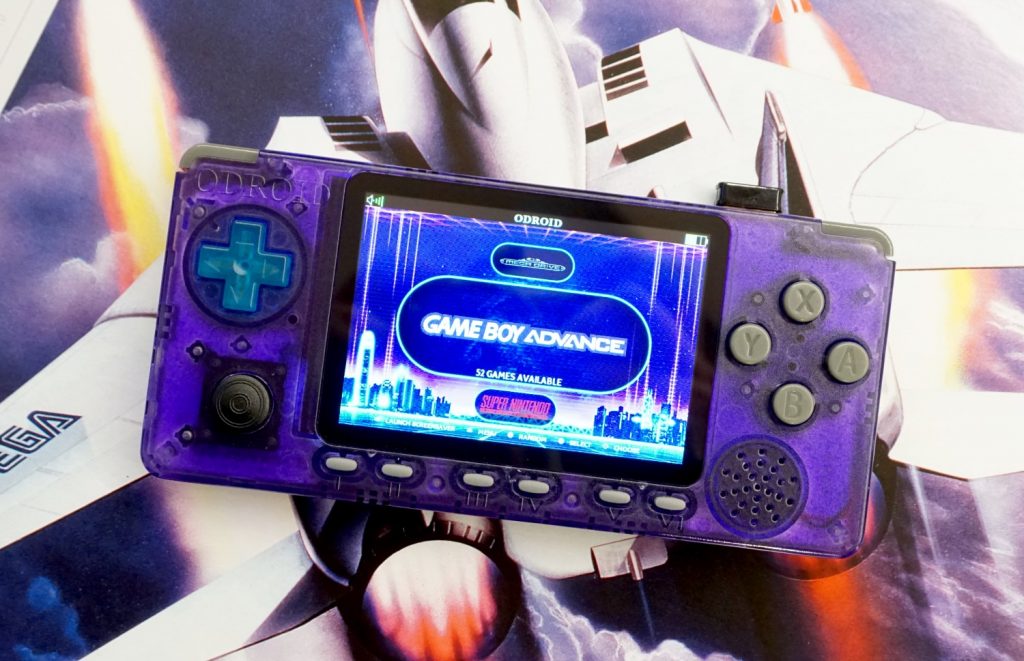
Having said that, part of the fun of a device like this is watching it evolve and improve over time (or contributing yourself if you have the skills). The Odroid-Go Advance is going to be around for a very long while yet. I’m confident that we’ll see some amazing advances in performance and usability in the coming months.
WHAT’S THE PERFORMANCE OF THE ODROID-GO ADVANCE LIKE?
One of the main pulls of this handheld is the promise of PSP and N64 emulation. Whilst the RK3326 isn’t powerful enough to conquer the entire library for these systems, it is already capable of playing some games at near to full speed.
Some of the 2D PSP library runs well, with 3D titles being touch and go. For example GTA Vice City Stories runs at an acceptable framerate, but the audio is messed up. Ridge Racer runs OK but occasionally lags massively. N64 is in a better state, many first party games such as Mario Kart 64 run very well indeed. I’ve played a good few hours of Diddy Kong Racing and F-Zero X on this thing with some acceptable dips in framerate once in a while.
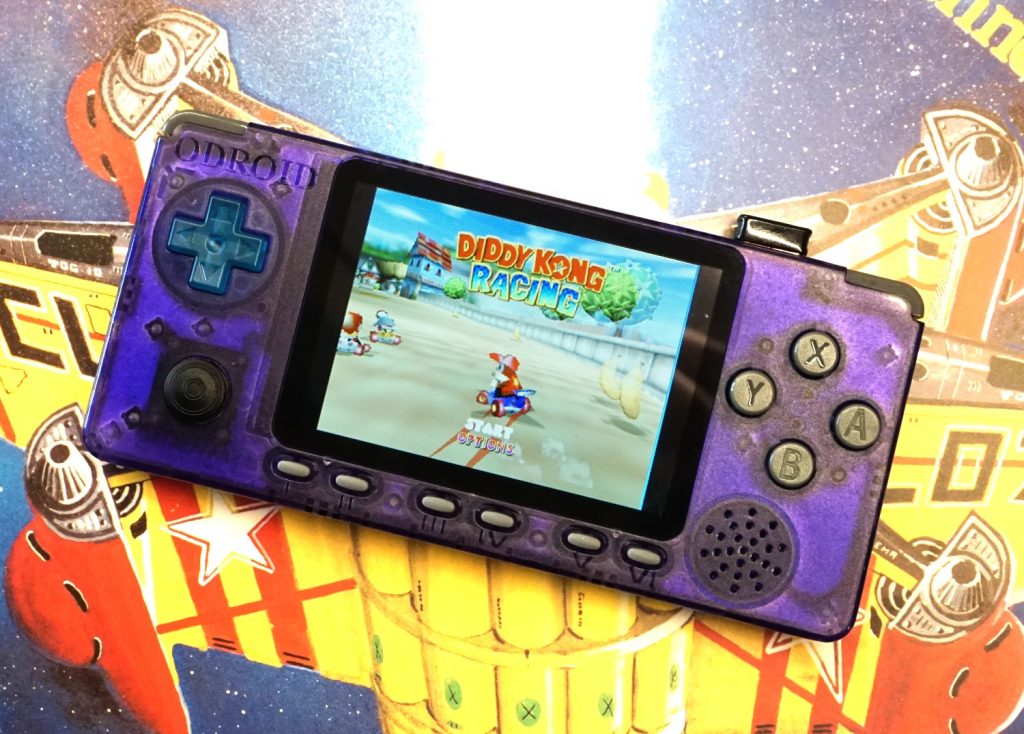
There are plenty of videos on YouTube showcasing various games, but it’s worth taking them all with a pinch of salt right now. Performance should improve over time, and games that are unplayable today may well be playable in the future once some optimisations have been made.
Currently my favourite console to play on this is GBA on the official OS. As mentioned previously, the LCD is perfect for GBA. I can’t imagine a better non-official handheld than the Odroid-Go Advance for GBA emulation.
EXTRA BITS
If you don’t run a Linux machine, I would strongly recommend getting a WiFi dongle. Not all are compatible, but I can confirm that the EW-7811Un (US / UK) works great. Someone on the HardKernel forums has also confirmed that the TL-WN725N (US / UK) works as well.
Once connected to your home WiFi, you can simply login in to the OGA by typing \\<ip_address> in to a Windows explorer window. From there, just drag your ROMs into the specific directories. It’s worth noting that some emulators or operating systems don’t yet work correctly with zipped ROMs. If you find that some are missing, try unzipping them and they should show after a refresh.
As previously mentioned, you can replace the sharp grey d-pad with one from the Game Boy Pocket. No modifications are needed, it can just be dropped in. The cheapest place for these is AliExpress.
If you feel like giving your shell some colour, The Tamiya PS (US / UK) range of paints are suitable. Just make sure to mask off the outside of the shell and give the inside a few light coats until you’ve got the depth of colour you want. Some people have also had luck dyeing their shell using Rit iDye Poly (US / UK) though that seemed like too much hassle at the time. I used Tamiya PS-45 on my shell, and it came out OK. I was perhaps a bit too eager, and the paint job is spotty due to that. But I’m happy with it.
If you’re not planning on painting your shell or you’re going to use a transparent colour, it might be worth using electricians tape on the LCD. The LCD does leak a lot of light through the left side of the shell. By adding tape (probably a little more than this if I’m honest) you’ll reduce the amount of light leakage.
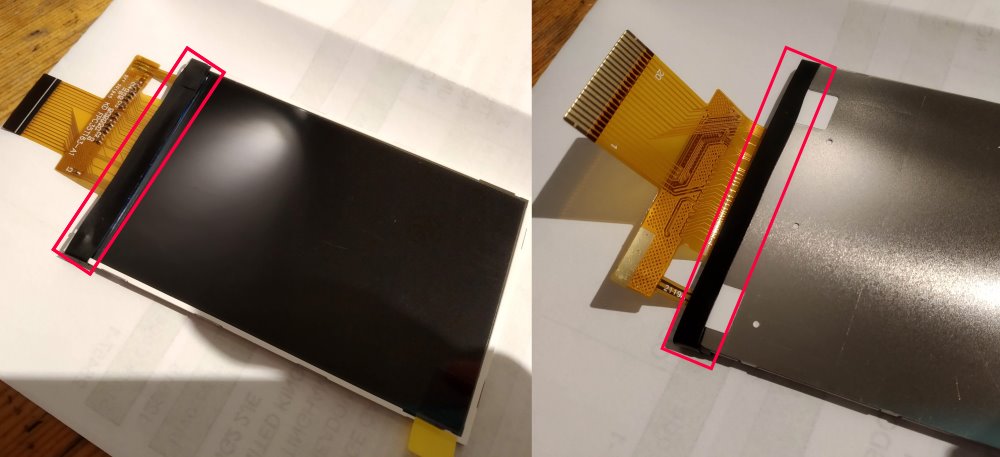
FINAL THOUGHTS ON THE ODROID-GO ADVANCE
The Odroid-Go Advance changes everything, and presumably it has given our Chinese manufacturer friends something to think about. It’s doubtful that people will be interested in any more Ingenic handhelds after this. Hopefully the OGA will help to usher in an era of powerful ARM based handhelds with Open Source operating systems. Whilst the Odroid-Go Advance hasn’t done everything right, the steps that HardKernel have taken with it are most definitely in the right direction.
The evidence of this is that the console is already sold out in many places. The official UK vendor sold out within days and HardKernel themselves have said that they are overwhelmed with demand.
Whilst the software is rough around the edges right now, it’s going to be interesting watching it mature over the coming months. The handheld has a lot of promise and I’m really happy to be along for the ride.

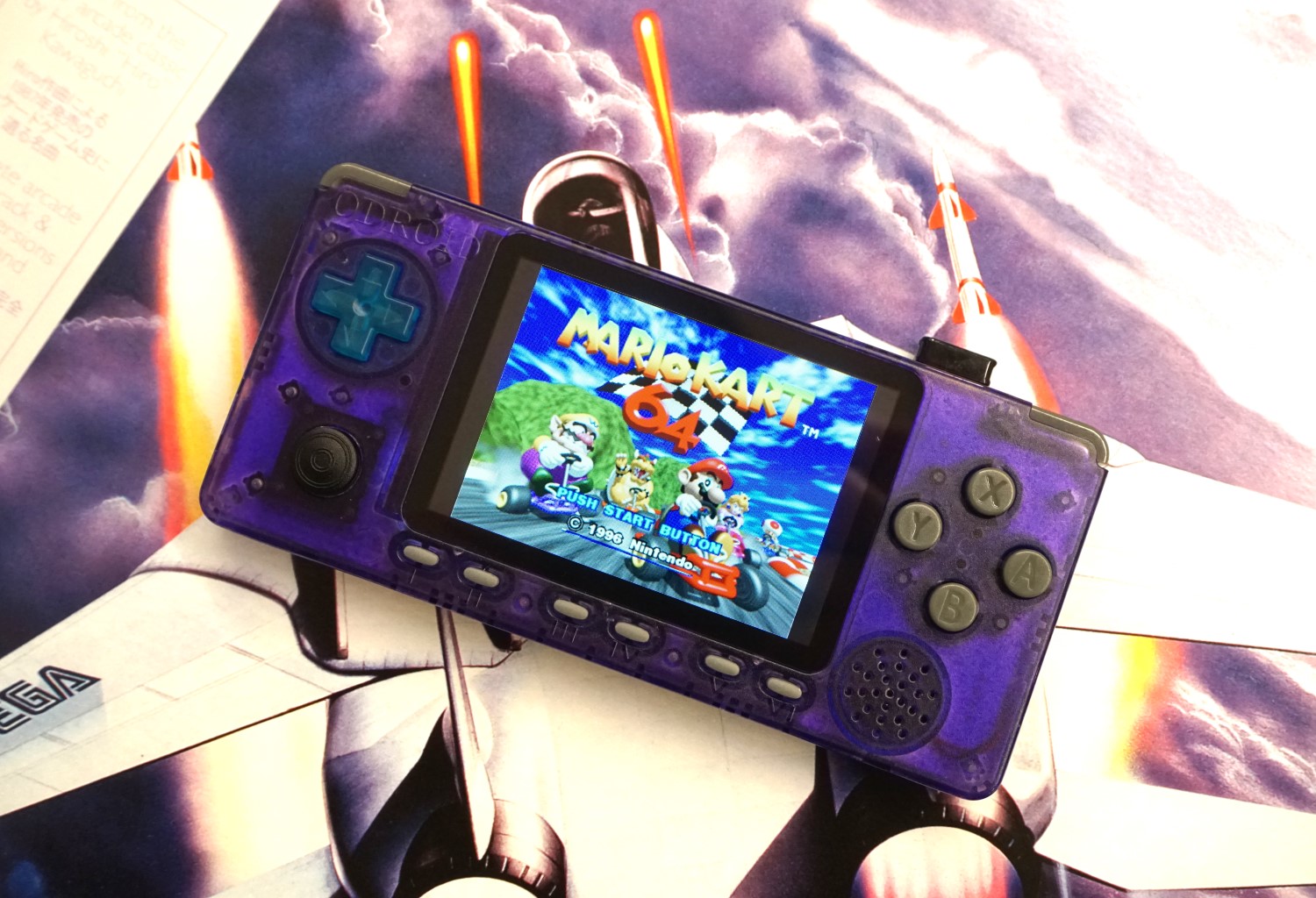
Gba scale great, but what about other console like megadrive/snes and older gens console ?
256×224 – snes
320×244 – megadrive ntsc
320×240 – megadrive pal
256×224 – ps1
None of these scale natively in to that resolution, so scaling will be required or you’ll have to use less than full vertical resolution.
hey have you seen this? https://twitter.com/softwincn/status/1231821993198022657
Yeah I have, nice one. There’ll be a post in the next few days.
It’s great that your review talks about how good GBA looks due to the 2x scaling of the original resolution, but what about all the other systems?? I owned an RG-350 briefly and was shocked by how terrible the screen was for anything other than systems that fitted it’s low resolution of 320×240 That meant that in particular GBA and GB/GBC looked horrible on that screen.
So does the OGA do well at displaying non-native matching systems such as SNES, PS1, MD, TG16? Does it use some clever nearest-neighbour interpolation or something else to keep games sharp that don’t fit perfectly? This seems far more important to talk about than the display angles on a handheld system – but no reviews seem to talk about resolution and scaling much.
It’s a HUGE omission to a review of a retro handheld.
So please give a run down of how ALL supported systems look – are they blurry or sharp at full screen? – or do we need to run some games at postage-stamp size native resolutions like on the bright, but otherwise terrible screens of the Pocket GO 2 and RG-350?
Please consider going into these details. Youtube videos do not show this clearly either. It needs to be described.
Much thanks for any response. Bruno
The reason i mentioned GBA is because the LCD perfectly fits the resolution, if this was the case for other consoles I would have mentioned it.
256×224 – snes
320×244 – megadrive ntsc
320×240 – megadrive pal
256×224 – ps1
None of these resolutions fit perfectly into the 480×320 resolution of the OGA, so scaling or black borders is required. It’s not really feasible to give a list of which cores support which scaling techniques because 1) each OS handles these differently 2) each core can handle these differently 3) there are generally more than 1 scaling method for each core 4) each OS has a different level of completeness, meaning some options aren’t yet available.
Your best bet would be to see which cores are currently available for the device (it is changing by the day) and see whether your preferred scaling method has been implemented yet.
Cheers for reading, and I appreciate the comment.
Many thanks for the reply. May I ask then your subjective opinion of which systems you feel are acceptably sharp looking at full screen (in aspect ratio) – and I promise to remember it is subjective. I’m just interested to know if you think it displays most systems well, or whether you’d rather just use it as a GBA machine.
🙁 Would have liked opinion on this
I may get around to it, but you understand the massive amount of time it would take to test every scalar in every emulator for every system in every OS (of which there are at least 4 now) – and all for a subjective opinion which will no doubt get shot down by most people :D. At the end of the day, the pixels are smaller on this device than on a 320×240 LCD of the same size, so even with non-integer scaling on the systems that need it, the image quality is better than full screen GBA on a 320×240 display. I’m sorry I didn’t reply before, that was rude of me – I just haven’t had the time to dive that deep into scaling methods. Having said that, now that we’re not allowed out of the house in the UK maybe I’ll find the time for it one day.
Cool, and no worries. I didn’t mean to give you a big job – so even what you say here is useful. Thanks for the reply, Cheers and stay safe.
Since you didn’t mention it in the article, give the Emuelec image a shot if you have not tried it yet. I find it the most feature complete out of the images currently available.
It wasn’t available when is started writing it (edit: maybe it was actually), but yeah I will try it out for sure. Thanks.
Kind of assumed this was an Android device based on the naming. Anyway the lack of L2/R2 is a little disappointing but this looks pretty solid. My PlayGo seems good enough for now though. It’ll be interesting to see this device and successors evolve though.
Batocera beta is pretty good. 2020/02/13 version
Volume and brightness buttons work in games
Support of zipped roms
Live Updates
Did you pay for this yourself or was it sent to you? The reason I ask is because I’m in the UK and I’m wondering if ordering direct from Hardkernel works out cheaper once customs and landing fees are applied than if I were to go through Odroid.co.uk ,who want £83 including shipping.
Any info would be appreciated.
I paid for it from odroid, but they’re out of stock until may as are hardkernel. Your only choice right now is ameridroid.
I agree with basically everything you said in this piece. The device is very solid, it’s not perfect but it makes all the budget chinese handheld redundant. It’s more powerful, has a better screen, should have better software support, great battery life etc. It is as you said a bit shocking how poor the current releases of the various images are, having said that i bought a pi4 at launch and here were are 8 months later and there is no official release of retropi
is there an android img?
No. Maybe in future but likely not. No touchscreen, not really enough power.
The touchscreen and relatively low resolution might be a problem, but the RK3326 is in the same ballpark as the Raspberry Pi 3 and the MT8176 in the Powkiddy X18. The Cortex A35 is on par with the Cortex A53 in many tasks. It has the power to run Android just fine.
It could physically run Android if someone worked out the resolution and lack of touch screen. But wouldn’t performance take a massive hit running such a bulky OS?
Android would be interesting not for emulation but for native Android gaming. The Resolution could be a problem but I used to have one of those mini smart phones with a resolution of 250×120 or so and it was quite usable. I am very confident that someone will port it to the OGA.
What are the boot up times like? More Similar to RetroFW or closer to a Raspberry Pi? This being a handheld, this really matters to me for pick-up and put-down gameplay on the go. Thank you for the excellent review!
Definitely faster than raspberry pi. I’d say between 10-12 seconds.
Oh that’s much better than I was expecting. Thanks for the reply!
Excellent, thank you for the thorough review. Definitely a wait and see for me.
How do you feel about the distance between buttons for ABXY? Seems like they’re further apart than a normal setup, is that an issue at all?
Yeah they are, I noticed it immediately but very quickly got used to it. It’s not an issue for me now.